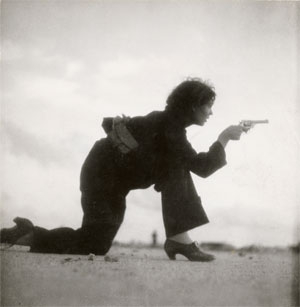3.11.24 — A Center of Concern
To continue from last week on ICP, the International Center of Photography would like you to know: it is concerned.
It is concerned not just about you, politics and wars, or even the planet, although its center of concern has been growing ever since its founding. A celebration of its fiftieth anniversary, through March 6, encompasses more than one hundred fifty works, spanning at least as many years and much of the globe. It has kept rethinking photography along the way. What began as the hopes of a leading photojournalist to keep his vision alive has changed, along with its name. “ICP at 50” opens with portraits of Americans, but African Americans— as couples, at choir practice, and alone. It cannot be an accident that its concern for dignity leads into a second, smaller show of David Seidner, a white fashion photographer who died of AIDS, while new acquisitions in photography at the Morgan Library seem blissfully secure.
as couples, at choir practice, and alone. It cannot be an accident that its concern for dignity leads into a second, smaller show of David Seidner, a white fashion photographer who died of AIDS, while new acquisitions in photography at the Morgan Library seem blissfully secure.
The center’s very origins lay in concern, and the C in ICP first stood for just that. Cornell Capa created the International Fund for Concerned Photography in 1956, in concert with Robert Capa, David “Chim” Seymore, Werner Bischof, and Dan Weiner, becoming the ICP we know in 1974. To this day, it boasts of the lines out the door for its opening. I still miss how well its Fifth Avenue mansion showed off photography, although I have followed it on its journey to a midtown office lobby, a basement space on the Bowery, and (with luck) a permanent home on the Lower East Side across from the Essex Market. It may not have space off the entrance for more than coffee and a gift shop, but it has a library, media labs, and a school. One of two floors for galleries has narrow walkways, but it pays off in the drama of looking down, not to a bloated museum atrium, but to art.
It can also boast of the two hundred thousand prints in its collection, so many that “ICP at 50” can handle only one per photographer. (You will just have to take its word that Elisabeth Sherman, Sara Ickow, and Haley Kane as curators, examined each and every one.) The show is a survey of photography all by itself. The section on the nineteenth century also points to a changing medium—from tintypes that allowed only one-off prints to plates that could print again and again. An unknown photographer, it turns out, printed in color as early as 1935, decades before the saturated colors of Helen Levitt and William Eggleston. But then Levitt’s photo of legs sticking out from under a car is street photography, too.
ICP will always have a soft spot for photojournalism. It has had recent shows of Magnum Photos, with its dedication to social history, and Robert Capa in Spain. The older of the Capa brothers, he witnessed the Spanish Civil War from the point of view of those who fought against fascism and lost. Sure enough, the poster photo for “ICP at 50,” by Gerda Taro, depicts a Spanish militia member in dramatic profile, raising her pistol. The show then leaps ahead to Martin Luther King, Jr., from Weiner, and JFK shaking hands from Cornell Capa himself. One need not claim a photo of the lunar lander for fine art, not when it is credited to NASA rather than an artist, but why try when the medium reaches to the moon?
Still, the story continues. Diversity remains in focus well after early black America. Gordon Parks has Ralph Ellison in a midnight hideaway like the protagonist of Invisible Man, but with music, making blackness audible and visible. Paul Mpagi Sepuya puts his own black body in question in a mirror study, and Mickalene Thomas looks as ever at herself. For once, her glitzy self sits off center and closer to the rear of her tacky surroundings. Taro’s Spaniard is kneeling, as much to display her youth and beauty as to take better aim.
Just ticking off the women contributors would be a lost cause. Lorna Simpson, Carrie Mae Weems, and Deana Lawson continue their unraveling of black identity, in the case of Simpson with enigmatic text. Others were creating modern photography, including Margaret Bourke-White, Dorothea Lange, Berenice Abbott, and Ilse Bing, whose shades of gray look more vivid and mournful every day. Still others mark the shift to present-day concerns. It is not just a matter of feminism or a matter of pride. When an unseen woman for Lee Friedlander casts her shadow on another woman, her back to the camera, she is casting a long shadow on photography itself.
It is about what photography does and is. For An-My Lê, photography’s public record can only approach her private history as a woman from Vietnam. But then ICP has always had its private side, like the intimate records of “Love Songs,” “Face to Face,” and “Close Enough” in just the last year. It has also begun to challenge photography as a reliable medium. That is where Postmodernism and such women as Laurie Simmons, Louise Lawler, and Barbara Bloom come in. Simmons and Lawler have their dolls and rephotography, while Bloom needs a whole wall to place images in an uncertain museum context—and I pick up the story of ICP’s formal and private sides another time, along with a look at photographs at the Morgan Library.
Read more, now in a feature-length article on this site.